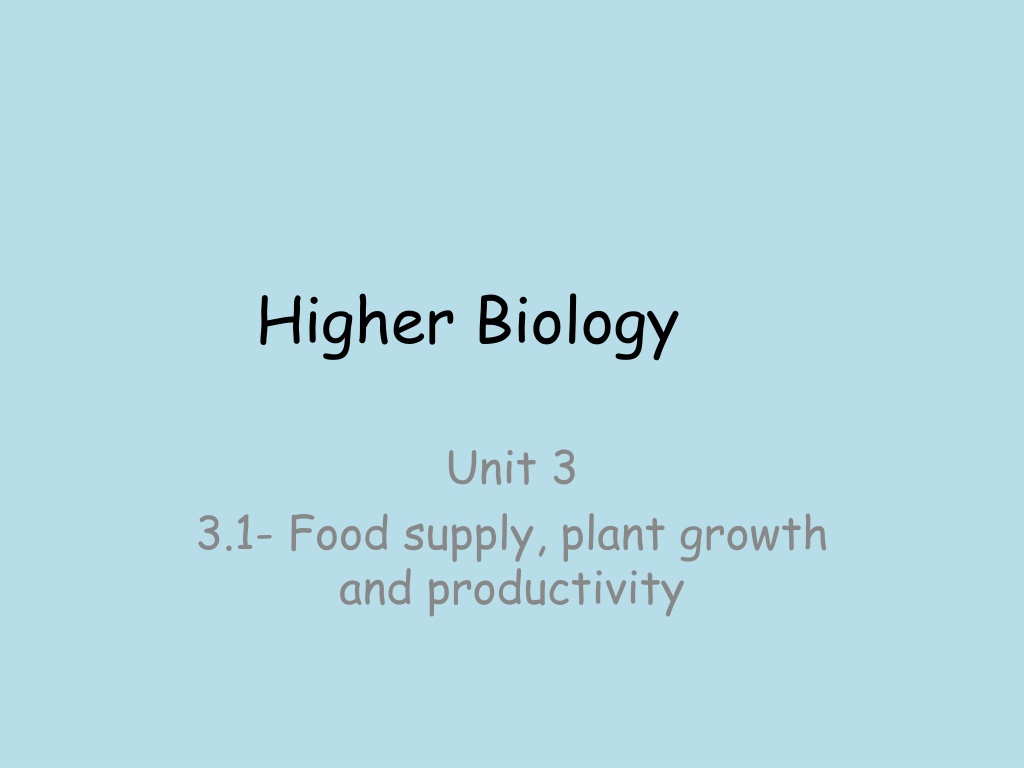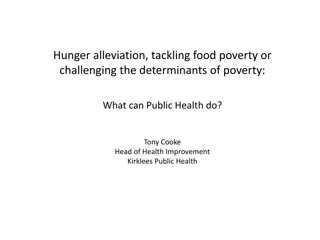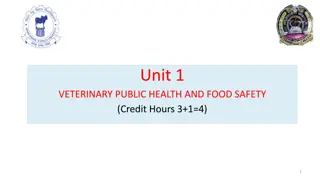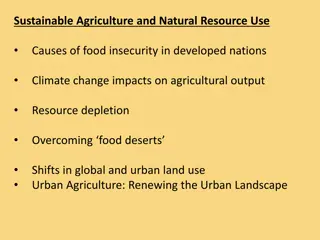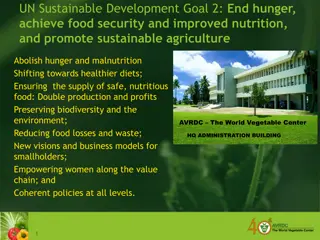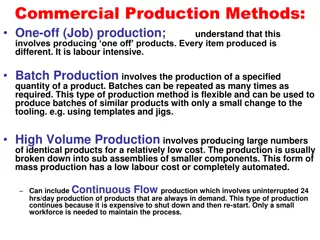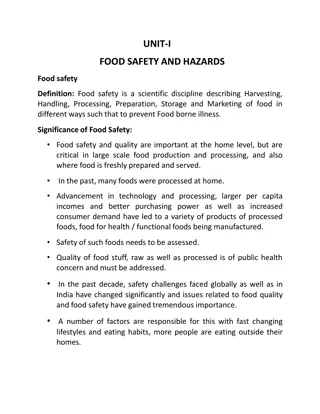Sustainable Methods for Improving Food Production Efficiency
Sustainable food production is crucial for meeting the increasing demand for food while preserving natural resources. By employing techniques like selective breeding and genetic engineering, we can enhance crop yields without degrading the environment. Identifying and overcoming limiting factors in plant growth is essential for maximizing production efficiency. This approach not only ensures food security but also supports the long-term sustainability of our food supply.
- Sustainable food production
- Plant growth
- Crop yields
- Environmental sustainability
- Agricultural techniques
Download Presentation

Please find below an Image/Link to download the presentation.
The content on the website is provided AS IS for your information and personal use only. It may not be sold, licensed, or shared on other websites without obtaining consent from the author. Download presentation by click this link. If you encounter any issues during the download, it is possible that the publisher has removed the file from their server.
E N D
Presentation Transcript
Higher Biology Unit 3 3.1- Food supply, plant growth and productivity
Food security Food security is the ability of human populations to access food of sufficient quality and quantity Quantity Quality Food security Access
Increasing demand The demand for food increases as the human population continues to increase This leads to a need for an increase in food production In the past this led to an increased use of fertilisers, pesticides and unsustainable farming techniques This often led to environmental degradation
Sustainable Food Production Attempts are being made to reverse the impact of these unsustainable food production techniques This is known as sustainability Sustainable methods of food production do not degrade natural resources such as the land and water supply
Biological Sciences in Food Production The application of techniques such as selective breeding, genetic engineering, and the development of biodegradable pesticides are examples of applications of science being used to support sustainable food production
Agricultural Production All food production depends on the process of photosynthesis The Earth possesses at least 75000 species of edible plants but humans depend on a small number of these to produce 95% of the world s food supply
Main crop species Cereals Root crops Maize Potato Rice Cassava Soya bean Legumes
Improving yields The area to grow crops is limited so food production can only be increased by improving efficiency The following practices can be employed to improve efficiency:
Identify limiting factors By identifying any factors that are limiting the growth of plants steps can be taken to overcome this limiting factor and increase yield An example would be identifying a water shortage in soil and using a sprinkler to provide water to the plants
Use of higher yield cultivar Plant crops can be replaced by higher yielding cultivars These plants will use the same resources and space but will result in a greater yield so are more efficient
Crop Protection Protecting crops from pests, disease and competition can help to improve yield To ensure this is sustainable minimal doses of biodegradable herbicides, fungicides and pesticides
Pest Resistant Crops Development of pest resistant crops can help to improve yield This can be achieved through genetic engineering
Food chains Food chains are representations of the transfer of energy Most of the energy obtained by a consumer in an ecosystem is used for growth, movement and thermoregulation Only about 10% of the energy taken in by an organism is passed to the next level of the food chain
Length of food chain In general, the shorter a food chain is the greater the quantity of energy held in the food Growing plant crops for human consumption therefore generates far more food per unit area of land than livestock
Cereal Plant 1000 kg Farm Animal 100kg Human 10 kg
Land planted with a crop to feed humans produces far more food than the same land planted with grass to feed livestock Some habitats are unsuitable for the cultivation of crops but can be used efficiently for livestock production
Grassy land on steep hillsides is unsuitable for crop cultivation but can be used for sheep farming.
